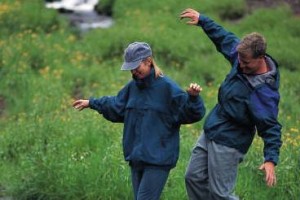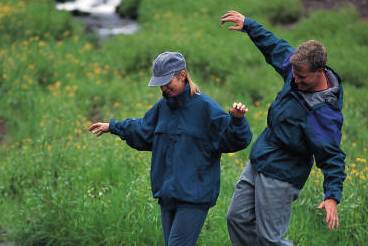 According to the Centers for Disease Control and Prevention (CDC), falls are the leading cause of death related to injury among the elderly, and over a third of those aged 65 and older fall every year. Problems with balance are not uncommon in older adults and are one of the primary reasons they seek consultation with a doctor. This is not surprising, since balance issues can seriously affect the activities of everyday living, such as walking, getting up from a chair, navigating stairs and bending over.
According to the Centers for Disease Control and Prevention (CDC), falls are the leading cause of death related to injury among the elderly, and over a third of those aged 65 and older fall every year. Problems with balance are not uncommon in older adults and are one of the primary reasons they seek consultation with a doctor. This is not surprising, since balance issues can seriously affect the activities of everyday living, such as walking, getting up from a chair, navigating stairs and bending over.
Balance disorders in older people are often due to inner ear problems. These include:
- Benign Paroxysmal Positional Vertigo (BPPV). Tiny particles of calcium called otoconia break free in the inner ear and hit the inner ear’s sensors, which are responsible for telling you where you are in space, creating a sensation of dizziness and an intense feeling of vertigo when you change position.
- Labyrinthitis. A swelling and irritation of the inner ear.
- Menière’s Disease. An inner ear disorder characterized by low-pitched tinnitus, vertigo, intermittent hearing loss (it comes and goes) and a feeling of fullness in the ear.
Loss of balance can also be a result of vision problems such as macular degeneration, cataracts, glaucoma and diabetic retinopathy. Cardiac problems, low blood sugar and some medications can also lead to a loss of balance.
Dr. Neil Cherian, from the Neurological Center for Pain at the Cleveland Clinic, specializing in tinnitus, dizziness, and vestibular and balance disorders says, “As you age, common disorders such as vision loss, arthritis, and a diminished number of nerve endings in the feet can negatively affect your balance.”
Our vestibular system is what keeps us from falling over. It is a system of fluid-filled tubes that work with specialized nerves in the inner ear to tell the brain what position we are in. As we age, that system can begin to break down. Both blood flow and the number of nerves in the inner ear begin to decline after age 55. However, certain activities can help to preserve your sense of balance and allow you to maintain your agility into older age.
“Cardiovascular workouts like hiking and climbing can help maintain and even improve your equilibrium,” Dr. Cherian notes. Joint mobility and muscle strength are necessary in order to keep in balance, and many seniors struggle with limited mobility and arthritis. However, there are activities that improve and strengthen these abilities and are appropriate for seniors, such as Tai Chi, yoga, water aerobics, dancing and gardening, all of which can help to keep your sense of balance honed. Your local senior center, recreation center or health club will usually offer a variety of activities geared toward older adults.
Following are some exercises to help maintain balance that can be practiced at home:
- Stand with your back to a wall, with your heels about 8 inches from it. Lift the balls of your feet off the ground as high as you can and hold for 10 seconds. Repeat 5 times.
- Using the back of a chair, a railing or wall to steady yourself, move up and down on the balls of your feet. Repeat as many times as you can. When you begin to feel steadier, try the exercise standing on one leg at a time.
- Practice walking up and down stairs to strengthen you thigh and hip muscles.
- Repeatedly getting up from a chair can also strengthen hip and thigh muscles. Try to use your hand as little as possible when doing this for the greatest benefit.

